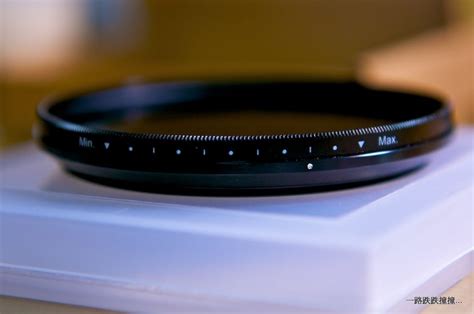Choosing the Right Workspace
In order to have a productive and efficient workspace, it’s crucial to choose the right environment that suits your needs. Whether you are a professional craftsman or a DIY enthusiast, having a well-organized and comfortable workspace can greatly impact the quality and speed of your work. In this blog post, we will discuss the key factors to consider when choosing the right workspace.
1. Location:
When selecting a workspace, it’s important to consider the location. Make sure the workspace is easily accessible and close to your storage area or materials. It should also be in a quiet area where you can focus on your work without distractions. Additionally, ensure that the workspace has proper ventilation and temperature control to create a comfortable working environment.
2. Size and Layout:
The size and layout of your workspace are also crucial factors to consider. Assess the amount of space you need based on the type of work you do and the tools and equipment you use. Make sure your workspace is spacious enough to accommodate your projects and allows for easy movement. Consider the layout of your workspace and ensure that everything is within reach, making your work more efficient and minimizing the time wasted on searching for tools or materials.
3. Lighting:
Good lighting is essential for any workspace. Make sure your workspace is well-lit, preferably with natural light. Natural light not only helps in reducing eye strain but also enables you to see your work more clearly. If natural light is not available, invest in good quality artificial lighting that simulates natural daylight. This will help in providing a clear vision of your work and prevent any mistakes due to poor visibility.
4. Noise and Distractions:
Consider the noise level in your chosen workspace. Excessive noise can be distracting and negatively impact your productivity. If possible, choose a location away from high traffic areas or noisy machinery. If noise is unavoidable, investing in noise-canceling headphones or using sound-dampening materials can help create a more peaceful and focused environment.
5. Safety and Comfort:
Creating a safe and comfortable workspace is of utmost importance. Ensure that your workspace has proper safety measures in place, such as fire extinguishers, first aid kits, and proper ventilation for chemicals or fumes. Additionally, invest in ergonomic furniture and equipment to prevent strain or injuries during long working hours. Prioritize your comfort to maximize your focus and productivity.
Essential Hand Tools for Precision Work
When it comes to precision work, having the right hand tools is essential. Whether you are a professional craftsman or a DIY enthusiast, using the correct hand tools can make a significant difference in the quality and accuracy of your work. In this blog post, we will explore some of the most important hand tools that every precision worker should have in their toolbox.
List of Essential Hand Tools
In order to achieve precision in your work, it is crucial to have the right hand tools. Here is a list of some essential hand tools that can help you achieve accuracy and precision:
- Measuring Tools: Measuring tools such as tape measures, rulers, and calipers are crucial for precise measurements. These tools enable you to measure the dimensions of your workpiece accurately.
- Cutting Tools: Cutting tools like utility knives, chisels, and saws are essential for precise and clean cuts. These tools allow you to cut through various materials with precision and accuracy.
- Joinery Tools: Joinery tools like chisels, mallets, and hand planes are necessary for creating precise joints. These tools help you achieve a tight and secure fit between different parts of your project.
- Screwdrivers and Screwdriver Sets: Screwdrivers are indispensable for driving screws into place accurately. Having a set of different types and sizes of screwdrivers ensures that you have the right tool for every job.
- Pliers: Pliers are versatile hand tools that come in various shapes and sizes. They are invaluable for gripping, bending, and twisting wires or small objects. Pliers provide the dexterity required for intricate and precise tasks.
Table of Hand Tools for Precision Work
| Hand Tool | Function |
|---|---|
| Tape Measure | Measuring length and dimensions accurately |
| Ruler | Straight edge for measuring and marking |
| Calipers | Precise measurement of small objects and clearances |
| Utility Knife | Cutting and scoring various materials |
| Chisels | Removing excess material and creating precise cuts |
| Saws | Cutting through different materials with precision |
| Hand Planes | Smoothing, shaping, and removing material from surfaces |
| Screwdrivers | Driving screws accurately into place |
| Pliers | Gripping, bending, and twisting small objects |
Having these essential hand tools in your workshop will enable you to tackle precision work with confidence and accuracy. Remember to maintain and care for your hand tools properly to ensure their longevity and optimal performance.
Power Tools for Efficiency and Productivity
Power tools are an essential component of any workshop or DIY project. These tools are designed to make tasks easier, faster, and more efficient, ultimately increasing productivity. Whether you are a professional tradesperson or a hobbyist, having the right power tools in your arsenal can make all the difference in the success of your projects.
One of the key benefits of power tools is the speed at which they can complete tasks. With traditional hand tools, certain tasks can be time-consuming and require a significant amount of physical effort. However, with power tools, you can complete these tasks in a fraction of the time. For example, a power drill can quickly and effortlessly create holes, while a power sander can smooth surfaces with ease.
Another advantage of power tools is their ability to handle more challenging tasks. Whether you are working with tough materials or complicated projects, power tools are designed to handle the job. For instance, a circular saw can effortlessly cut through thick boards, while a jigsaw can easily navigate intricate curves and angles. By using power tools, you can tackle a wider range of projects and achieve professional-quality results.
- Efficiency: Power tools allow you to complete tasks in less time and with less effort, improving overall efficiency.
- Increased productivity: By speeding up tasks and handling more challenging projects, power tools can significantly increase productivity.
- Wide range of capabilities: From cutting and drilling to sanding and shaping, power tools offer a variety of functions to suit different project needs.
- Precision and accuracy: Many power tools come with features such as laser guides and depth adjustments, ensuring precise and accurate results.
| Power Tool | Function |
|---|---|
| Drill | Create holes in various materials |
| Sander | Smooth surfaces and remove excess material |
| Saw | Cut through different materials, such as wood or metal |
| Router | Create decorative edges and shapes on wood |
| Nail Gun | Quickly and securely attach materials using nails |
While power tools offer numerous benefits, it is important to prioritize safety when using them. Always read the manufacturer’s instructions, wear appropriate safety gear, and take necessary precautions to prevent accidents or injuries. Additionally, proper maintenance and regular inspections of power tools are essential to ensure their longevity and optimal performance.
In conclusion, power tools are indispensable for anyone looking to maximize efficiency and productivity in their workshop or DIY projects. With their speed, capabilities, precision, and versatility, these tools can elevate the quality of your work and help you accomplish tasks that would be challenging or time-consuming with traditional hand tools. However, always prioritize safety and proper maintenance to make the most of your power tools and ensure long-lasting performance.
Importance of Good Lighting and Magnification
In any workspace or workshop, good lighting and magnification are essential for a variety of tasks. Whether you are engaged in precision work, crafting, or DIY projects, proper illumination and the ability to see clearly can make a significant difference in the outcome of your work. It not only improves the overall quality of your finished product but also ensures your safety and promotes efficiency.
One of the main reasons good lighting is crucial is that it allows you to see the fine details of your work. When dealing with intricate tasks such as small electronic repairs, jewelry crafting, or even painting miniature figurines, adequate lighting helps you spot imperfections, flaws, or tiny parts that might otherwise go unnoticed. By highlighting these details, you can make necessary adjustments or corrections, resulting in a more precise and professional-looking end result.
Moreover, good lighting helps prevent eye strain and fatigue. When working in dimly lit conditions or with insufficient lighting, your eyes have to work harder to focus, causing strain and discomfort. This can not only affect the quality of your work but also lead to headaches and other discomforts. By providing ample lighting, you reduce eye strain and promote a more comfortable and productive work environment.
- Sharper vision and reduced eye strain
- Improved accuracy and precision
- Enhanced safety and awareness
- Promotes efficiency and productivity
- Allows for detailed inspections and examinations
In addition to proper lighting, magnification tools are also essential for many tasks that require intricate work. Magnifiers help you see small objects or details up close, making it easier to identify fine lines, small components, or imperfections. They come in various forms, such as magnifying glasses, magnifying lamps, or even specialized magnifying lenses that can be attached to eyeglasses or goggles.
When combined with good lighting, magnification tools offer even greater precision and accuracy. They allow you to work with greater confidence, especially when dealing with delicate or intricate tasks. From electronics assembly and watch repair to embroidery and other crafts, magnifiers help you see the finer details that would otherwise be difficult to detect with the naked eye.
| Benefits of good lighting and magnification: |
|---|
| Improved visibility and clarity |
| Reduced errors and mistakes |
| Better control and precision |
| Reduced eye strain and fatigue |
| Increased safety and accuracy |
In conclusion, the importance of good lighting and magnification in a workspace cannot be overstated. Whether you are a hobbyist or a professional, these factors play a critical role in ensuring the quality and accuracy of your work. By investing in proper lighting fixtures and magnification tools, you will enhance your productivity, reduce errors, and ultimately achieve better results. So, make sure your workspace is well-lit and equipped with adequate magnification to create an environment that promotes efficiency, precision, and overall satisfaction in your craft or work.
Measuring and Marking Tools for Accuracy
When it comes to woodworking or any precision work, having the right measuring and marking tools is crucial. These tools ensure accuracy and precision in every project you undertake. Whether you are a professional craftsman or a DIY enthusiast, investing in high-quality measuring and marking tools will greatly improve the outcome of your projects. In this blog post, we will explore some essential measuring and marking tools that will help you achieve accuracy and precision in your work.
List of Measuring and Marking Tools:
| Tool | Function |
|---|---|
| Ruler | Used for measuring straight lines and lengths. |
| Tape Measure | Ideal for measuring longer distances quickly and easily. |
| Square | Ensures proper right angles and assists with determining straight lines. |
| Calipers | Provides precise measurements of thickness, diameter, or depth. |
| Protractor | Used for measuring and marking angles accurately. |
| Marking Gauge | Enables precise marking of measurements on wood or other materials. |
Importance of Measuring and Marking Tools:
Measuring and marking tools play a crucial role in woodworking and precision work. They allow you to ensure accurate measurements, shapes, and angles, resulting in a professional-looking and well-fitted final product. Using these tools properly will help you avoid costly mistakes and achieve precise cuts and joints. Imagine trying to build a cabinet without accurately measuring and marking the dimensions – the end result would be disastrous.
In Summary
Investing in high-quality measuring and marking tools is essential for any woodworking or precision work enthusiast. The accuracy and precision these tools provide will significantly improve the quality of your projects. With the right tools, such as rulers, tape measures, squares, calipers, protractors, and marking gauges, you can ensure that your measurements and markings are accurate and precise, resulting in well-fitted and professional-looking finished products.
Securing and Clamping Tools for Stability
When it comes to woodworking or any other precision work, securing and clamping tools play a crucial role in ensuring stability and accuracy. These tools are designed to hold the workpiece firmly in place, preventing it from moving or shifting during various tasks. Whether you are cutting, drilling, or joining pieces together, having a reliable clamping system can make a world of difference in the quality and precision of your work.
One of the most common securing tools used in workshops is the bench vise. This versatile tool is typically mounted on a workbench and consists of two jaws that can be tightened or released to hold objects securely. Bench vises are available in various sizes and with different jaw configurations to accommodate different types of workpieces. They are widely used for tasks such as sawing, filing, and drilling, providing a stable platform to work on.
Another important clamping tool is the C-clamp, also known as a G-clamp. This tool has a simple yet effective design, with a fixed jaw and a screw mechanism that allows the movable jaw to be adjusted. C-clamps are commonly used for holding together two or more pieces of wood during gluing or assembly processes. They provide a strong and reliable grip, ensuring that the pieces stay in place until the adhesive sets or the joinery is completed.
In addition to bench vises and C-clamps, there are various other clamping tools available that cater to specific needs. Quick-release clamps, for example, provide convenience and efficiency as they can be rapidly adjusted and released with a single hand. Pipe clamps, on the other hand, are ideal for large-scale projects and provide a wide clamping surface. Spring clamps are lightweight and easy to use, making them perfect for holding smaller objects or securing temporary joints.
Having a range of securing and clamping tools in your workshop is essential for achieving stability and accuracy in your projects. These tools not only hold the workpiece firmly in place, but they also allow you to work with confidence, knowing that the materials won’t shift or move unexpectedly. Whether you are a professional woodworker or a DIY enthusiast, investing in quality securing and clamping tools will undoubtedly enhance the overall quality and precision of your work.
Organizational Solutions for a Tidy Workshop
Keeping a tidy workshop is essential for any DIY enthusiast or professional. A clean and organized workspace not only improves efficiency but also promotes safety. When tools and materials are properly stored, it becomes easier to find what you need, minimizing time wasted and frustration. In this blog post, we will explore some organizational solutions that can help you maintain a tidy and well-structured workshop.
One effective way to keep your workshop organized is by utilizing storage cabinets and drawers. These provide an excellent solution for storing smaller tools and supplies. The key is to assign specific locations for each item and label the drawers accordingly. This way, you will always know where everything belongs and can quickly find it when needed. Additionally, consider investing in magnetic tool holders or pegboards to hang frequently used tools in a visible and easily accessible manner.
Another aspect of workshop organization is proper labeling. By labeling storage containers, shelves, and toolboxes, you create a systematic approach to locating items. This is especially useful when you have multiple projects going on simultaneously. Utilize labels that are clear, visible, and durable to ensure they last. Color coding can also be a helpful strategy, grouping items by category or project. This visual cue allows for quick identification and helps maintain order.
Furthermore, consider incorporating a workbench or workstation that has integrated storage solutions. Workbenches with built-in drawers or cabinets provide an opportunity to keep frequently used tools within reach and neatly arranged. Having designated spaces for commonly used items ensures they are readily available and also encourages immediate cleanup after use. A clutter-free work surface contributes to better focus and productivity.
List of Organizational Solutions for a Tidy Workshop:
- Storage cabinets and drawers: Assign specific locations and label drawers.
- Magnetic tool holders or pegboards: Hang frequently used tools for easy access.
- Proper labeling: Label storage containers, shelves, and toolboxes for easy identification.
- Color coding: Group items by category or project for visual organization.
- Workbenches with integrated storage: Keep frequently used tools within reach.
Table Comparing Different Organizational Solutions:
| Organizational Solution | Advantages | Disadvantages |
|---|---|---|
| Storage cabinets and drawers | Efficient use of space, easy to find and store items | May require additional investment |
| Magnetic tool holders or pegboards | Quick access to tools, saves workspace | Limited capacity for smaller tools |
| Proper labeling | Easy identification, systematic organization | Requires time and effort for initial setup |
| Color coding | Visual organization, quick identification | May require consistent maintenance |
| Workbenches with integrated storage | Convenient access to frequently used tools | Limited storage capacity |
Implementing these organizational solutions can transform your workshop into a well-structured and efficient workspace. By maintaining tidiness and organization, you not only enhance your productivity but also ensure a safe working environment. So, take the time to evaluate your workshop’s organizational needs and make the necessary improvements. Your future self will thank you for it!
Frequently Asked Questions
Question 1: How do I choose the right workspace for my precision work?
When choosing a workspace for precision work, it is important to consider factors such as available space, lighting conditions, and noise levels. Ensure that the area is well-lit and has adequate space for your tools and materials. Additionally, try to minimize distractions and noise to create a conducive environment for your precision work.
Question 2: What are some essential hand tools for precision work?
Some essential hand tools for precision work include precision screwdrivers, tweezers, needle-nose pliers, and a set of small files. These tools allow for delicate and precise movements, making them ideal for tasks that require accuracy and attention to detail.
Question 3: How can power tools improve efficiency and productivity in my workshop?
Power tools can greatly speed up tasks and increase productivity in your workshop. Tools like electric drills, sanders, and saws allow for faster and more precise cutting, shaping, and drilling, saving you valuable time and effort.
Question 4: Why is good lighting and magnification important in precision work?
Good lighting and magnification are crucial for precision work as they help improve visibility and allow for better accuracy. Adequate lighting reduces eye strain and shadows, making it easier to see small details. Magnification tools such as magnifying lamps or visors provide a closer view of the work, helping to spot imperfections or make precise adjustments.
Question 5: What measuring and marking tools should I have for accurate work?
To ensure accuracy in your work, you should have measuring and marking tools such as a tape measure, ruler, calipers, and a marking knife. These tools allow you to take precise measurements and mark the workpiece accurately, ensuring a more precise and professional outcome.
Question 6: Why are securing and clamping tools important in a workshop?
Securing and clamping tools play a vital role in providing stability and preventing movement during precision work. Clamps help hold the workpiece securely in place, allowing you to work with precision and reducing the risk of accidents or mistakes.
Question 7: How can organizational solutions contribute to a tidy workshop?
Implementing organizational solutions such as storage cabinets, tool chests, and wall-mounted organizers can help keep your workshop tidy and improve efficiency. Having designated spaces for tools, materials, and equipment ensures easy access and reduces clutter, making it easier to find what you need when working on a project.





